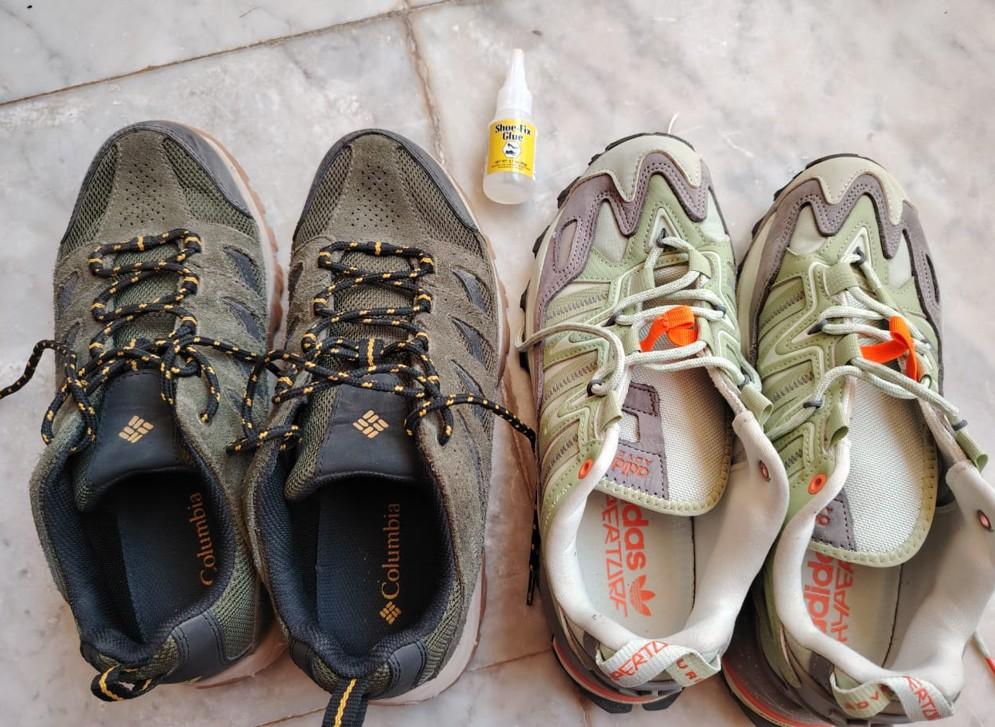Shoes in a hiking are as important as wheels on a car. A slight inconvenience can result in the spoil of the whole adventure. A hiker always needs accessories to keep the shoes working properly. During our years of experience, we have tested various shoe glues. We have some of the best shoe glue recommendations for you when it comes to adhesives.
Our experience gave us the idea that adhesives are critical for the life of shoes, but choosing the right one is always a tricky question. I have personally experienced that an excellent adhesive must withstand moisture, have flexibility, and have the ability to bond diverse materials like wood, rubber, leather, etc. In this review, we will break down the best adhesives, their strengths, and their features for you.
Best Shoe Glue for Hiking Boots: Our Top Picks
Shoe-Fix Shoe Glue
Shoe-fix Shoe Glue is an adhesive with strong binding abilities. Hikers use it on hiking boots. The polyurethane formula helps the user to get an instant bond with flexibility and durability. While it reaches its full strength in 24 hours, the bond repairs the torn soles, upper parts, and holes in the shoe instantly.

For ease of use, the bottle of this adhesive comes with a precision applicator, which helps in saving the glue from waste and applying it to the place of the problem precisely. Shoe-fix gets along well with extreme temperatures and works best when applied on clean and dry surfaces.
Some of the most important features of this adhesive include its bonding under extreme weather conditions, its waterproofing, its flexibility, and its durability. Ease of application via precision nozzle makes it an even more preferable option.
Conversely, while it quickly dries, it requires 48 hours to reach its full strength. It is also unsuitable for larger and more complex footwear damage. The odor of the glue is very strong. I recommend ventilation in the beginning to reduce the odor.
After testing every aspect of this glue, I can strongly recommend it to the hikers. Its flexibility helps in maintaining the shoe’s comfort.
Read More: Shoe-Fix Shoe Glue Review
SOF SOLE Shoe Goo
Among the adhesives we tested, one of the most effective adhesives was SOF SOLE Shoe Goo. It is an adhesive that offers stronger action than most of the top-rated glues. While it has a pungent smell, SOF SOLE Shoe Goo is a fitting choice for hikers.
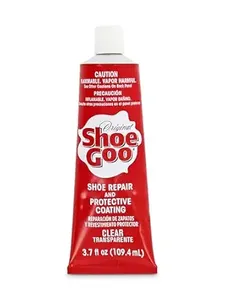
It dries faster, whereas its strength reaches the best after 24 to 48 hours. Its excellent features include its holding power. It holds the torn parts exceptionally well. Whether your shoe has a rubber sole, a damaged heel, or a torn patch, it binds them equally well. Additionally, it creates a protective covering that saves your shoe from damage.
Furthermore, it is flexible and waterproof, which makes it a revered choice of hikers. We tested it in water, mud, and in hard and dry weather; the capacities of this adhesive never cease to amaze us. Finally, the affordable price tag makes it even more attractive for hikers and adventurers.
The long-lasting tube of this adhesive contains 3.7 fl oz of glue, which becomes enough for you to apply several times in small and larger issues. With an affordable price tag, this brand offers a durable and economical shoe repair solution for its customers.
SHOE BOND Shoe Glue
One more adhesive that caught our eye is Shoe Bond Glue. After testing this glue, we come up with several observations. If you are a hiker and you need something in your backpack for bonding torn shoes, Shoe Bond Shoe Glue is one of the best options for you.
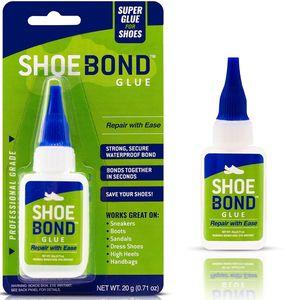
It offers excellent strength and durability. On applying, it dries out really quickly and bonds the torn parts immediately. The quick action distinguishes it from the rest of the glues. It takes 30 seconds to offer a durable bond between the torn parts of your shoe.
Owing to its viscosity, it also acts as a filler for cavities and holes. Additionally, it is flexible in nature, which does not make the shoe stiff and sturdy on application. Furthermore, this glue offers another excellent quality of waterproofness. Most of the adhesives wear out from the edges and soften when they come into contact with water. We tested Shoe Bond Shoe Glue in water as well, and it withstood the test with resilience.
One of the unique features that we loved about this glue is its precision tip, which helps in locating the damage area perfectly. For holes, tatters, and torn sides of soles, the precision tip smoothly applies the adhesive without any waste or ineptness. As a whole, this is multipurpose glue, offering versatile options for strength and use.
How to Choose Hiking Boots Glue: Buying Guide
Understand the Types of Adhesives
Adhesives are the items in your backpack whose usefulness you understand only when you use them. We have tested various adhesives and come to a conclusion that some of the following factors decide the goodness of an adhesive.
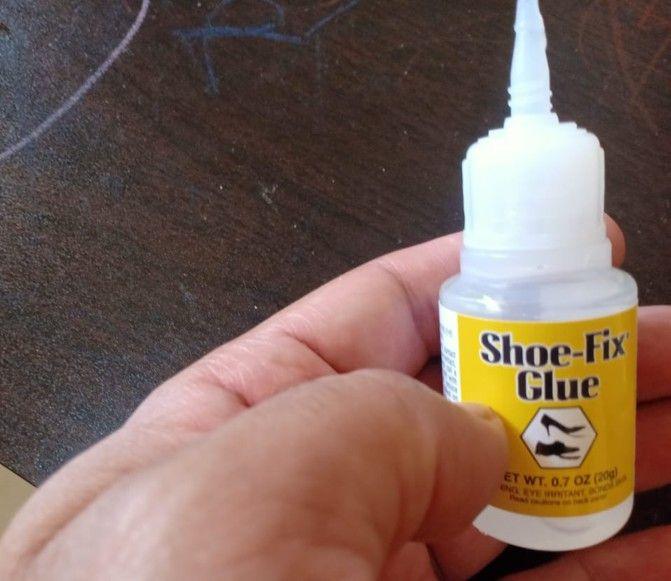
Firstly, polychloroprene, or natural rubber, is the major ingredient of contact cement. This glue demands meticulous application and alignment of the object of contact, as it takes a lot of time to dry and give full strength.
Secondly, the glues of polyurethane adhesives will be flexible and an ideal choice for binding rubber. This material adds durability to the adhesives.
Another example is cyanoacrylate, commonly known as super glue. It helps in the quick drying of the bond. Glues with these materials added are best for small items.
Furthermore, epoxy resins in the glue increase its strength for rigid materials like plastic. Avoid using these adhesives on the areas that need continuous flexing and movement.
Material
It is important to understand which glue works well with what kind of material. Scientific research and our experience combine to the result that I am sharing here.
If you have polyurethane as a major component of your glue, you can use it well with rubber and leather shoes.
Cyanoacrylates work best with synthetic fibers and plastic. The epoxy resins are not a preferable choice for shoes, but it works well with plastics.
Contact cement is the least preferred choice, as it takes a lot of time to dry and reach full strength. It normally works with rubber and leather shoes.
Waterproofing
What I have observed over the years of hiking is that a hiker must prefer water-resistant glues. Normal glues, which are prone to water, cause bond failure in wet conditions.
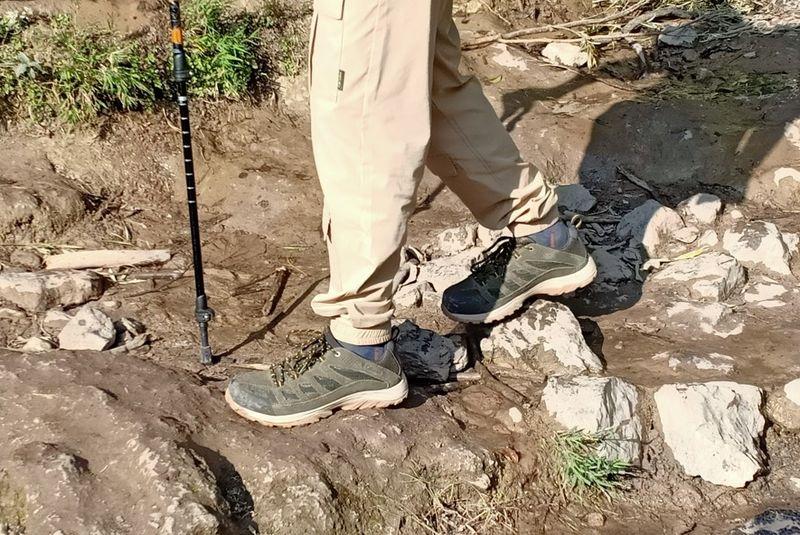
Among the major glues, polyurethane tops the list of water-resistant glues. Apart from polyurethane, epoxy resins and silicon-based glues are also excellent options for water resistance.
There is no denying the fact that a water-resistant flue is far better than normal glue for hikers. Normal glues lose their bonds while water-resistant ones don’t, hence last longer.
Water-resistant glues have an advantage over non-resistant glues during hikes.
Durability
Durability is directly proportional to flexibility. The glue, which offers excellent flexibility, is more likely to last longer with shoes than the other way round. The shoes remain in constant movement, which demands a bond to be flexible and versatile.
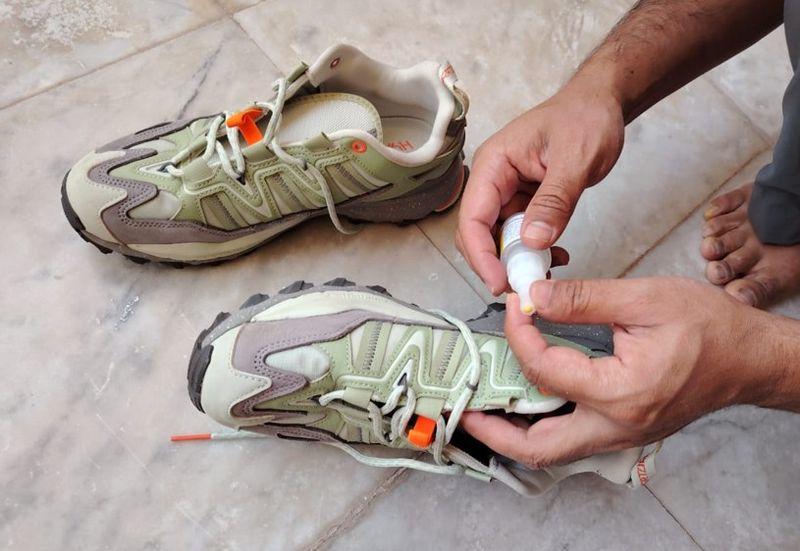
Different glues have varied flexibilities. After testing each adhesive in different situations, we have come to the conclusion that flexibility is best offered by epoxy resins, polyurethane, polyvinyl acetate (PVA), and cyanoacrylate.
All the above adhesives are considered in terms of shoe-binding capabilities from a hiker’s perspective.
Curing Time
Another major aspect to remember is the time of action of glue. Fast-setting glues take 5–10 minutes and are considered for emergencies.
Slow-curing glues take up to 24 hours to work aptly with full strength. Hikers use these glues when they have plenty of time.
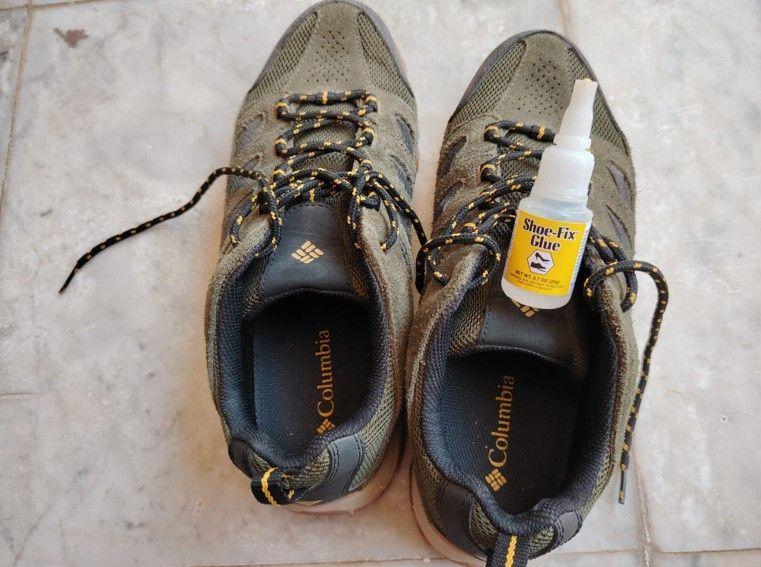
Slow-setting adhesives like polyurethane adapt instantly and keep on strengthening until they reach the desired strength.
For hikers, both these types are acceptable. Some glue takes time to set in. Hikers do not prefer these adhesives. Titebond II Premium Extend, epoxy resins, and contact cement are some of the slow-setting bonds.
Ease of Use
It is important to note that adhesives’ usability is a key factor.
Some adhesives offer a precision tip for effective use, some offer a non-toxic formula of the glue as a whole, and some glues provide a user’s manual for effective use. All these add to the ease of use of glue.
How to Apply Shoe Glue to Hiking Boots
Applying glue for repairs on a hike is not rocket science; just follow a few clear steps. Hikers who are novices to the field should note that glues work best on the clean surfaces.
If you are on a hike, you must first clean the surface that you want to repaint, even with alcohol if available. Secondly, make the surface a bit rough for improved adhesion.
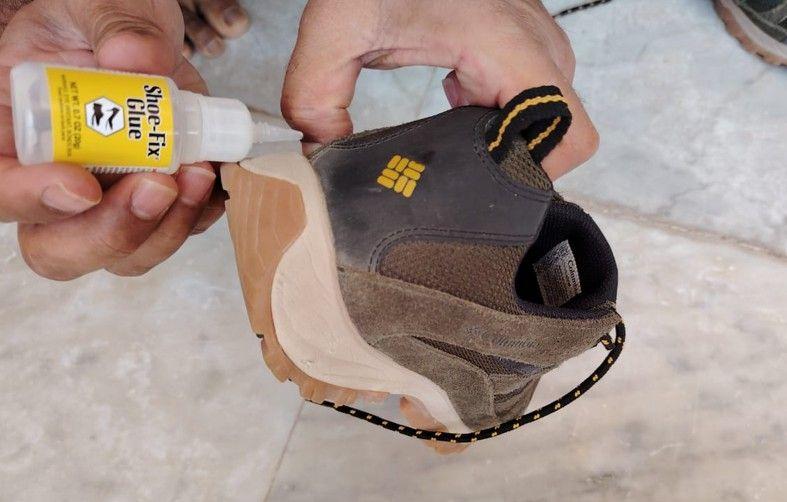
Next, spread the glue over the surface. Don’t overuse the glue. The next step is to press the parts together and clamp for a while.
Some even suggest hammering the parts for a while. The last step is different for different glues. In this step, all you have to do is wait for the glue to stick effectively.
Some glues adhere immediately, while others take as long as 24 to 72 hours. Additionally, use a pair of gloves while doing all this.
Conclusion
Glues are an essential part of a hiker’s backpack. Besides shoes, they are also used for repairing other items. Choosing the right adhesive for a hike can be challenging, but experience helps in making the best decision. This guide provides a detailed breakdown of adhesives and how to choose the right adhesive for a hike. Glues that offer flexibility, water resistance, ease of use, and shorter curing time are the most effective for hiking. Follow this blog for more tips on making your hikes easier and more effective.
Related: Best Hiking Boot Laces
